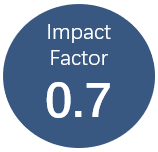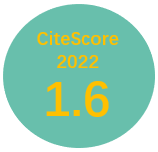The role of corporate governance in management of physical public infrastructures in some selected Sub-Saharan African countries
Vol 6, Issue 1, 2022
VIEWS - 505 (Abstract) 334 (PDF)
Abstract
Keywords
Full Text:
PDFReferences
African Union Development Agency (2016). One Stop Border Post Source (2nd Ed.). African Union Development Agency.
Araújo S and Sutherland D (2010). Public-Private Partnerships and Investment in Infrastructure (OECD Eco-nomics Department Working Papers No. 803). OECD. https://doi.org/10.2139/ssrn.1685344
Berle AA and Means GC (1932). The Modern Corporation and Private Property. Commerce Clearing House.
Donaldson L and Davis JH (1991). “Stewardship theory or agency theory: CEO governance and shareholder’s returns”. Australian Journal of Management, 16(1): 49–64. https://doi.org/10.1177/031289629101600103
Downs S, Montagu D, da Rita P, et al. (2013, March). Health System Innovation in Lesotho: Design and Early Preparations of the Maseru Public-Private Integrated Partnership (Healthcare Public-Private Partnerships Series No. 1). PwC.
Fayol H (1917). Administration Industrielle et Générale. Prévoyance, Organisation, Commandement, Coordination, Contrôle: Extrait du Bulletin de là de L’Industrie Minérale [Industrial and General Administration. Fore-sight, Organization, Command, Coordination, Control: Extract from the Bulletin of the Mineral Industry Society]. Dunod.
Freeman RE (1984). Strategic Management: A Stakeholder Approach. Pitman.
Frischmann B (2012). Infrastructure. The Social Value of Shared Resources. New-York, Oxford University Press.
Granovetter MS (1973). “The strength of weak ties”. American Journal of Sociology, 78(6): 1360–1380. https://doi.org/10.1086/225469
Grimsey D and Lewis MK (2002). “Evaluating the risks of public-private partnerships for infrastructure projects”. International Journal of Project Management, 20(2): 107–118. https://doi.org/10.1016/S0263-7863(00)00040-5
Inderst G (2010). “Infrastructure as an asset class”. EIB Papers, 15(1): 70–104.
Jaimurzina A and Sánchez J (2017). “Governance of infrastructure for sustainable development in Latin America and the Caribbean: An initial premise”. FAL Bulletin, 354(2).
Kabi P (2020, February 6). Why One Hospital Takes Up Almost 30% of This Country’s Entire Health Budget. Bhekisisa Centre for Health Journalism.
Kunaka C and Carruthers R (2014). Trade and Transport Corridor Management Toolkit. World Bank. https://doi.org/10.1596/978-1-4648-0143-3
Marriott A (2014, April 7). A Dangerous Diversion—Will the IFC’s Flagship Health PPP Bankrupt Lesotho’s Ministry of Health? (Oxfam Briefing Note). Oxfam.
Mbeng Mezui AC (2014). “Approfondir les marches Africains des capitaux pour le financement des infrastructures [Deepening African capital markets for infrastructure financing]”. Revue d’Économie Financière, 2014/4(116): 165–176. https://doi.org/10.3917/ecofi.116.0165
Nkwemu M and Besa Lungu P (2011). The One Step Border Concept: A Case of Chirundu Border Post Between Zambia and Zimbabwe. Government of Zambia.
Odiki BJ, Anyala M and Akena R (2009). Economic Benefits of an Efficient North-South Corridor: Strategic Level Analysis of Investments in the North-South Corridor. University of Birmingham.
Office of the Special Adviser on Africa (2015). Financing Africa’s Infrastructure Development. Policy Brief, pp. 1–6.
Perrotti DE and Sánchez R (2011). La Brecha de Infraestructura en América Latina y el Cariba [Infrastructure Gap in Latin America and the Caribbean] (Natural Resources and Infrastructure Series No. 153). United Nations Economic Commission for Latin America and the Caribbean.
Pierre J and Peters BG (2000). Governance Politics and the State. Macmillan.
Poole E, Toohey C and Harris P (2014). “Public infrastructure: A framework for decision making”. In: Heath A and Read M (Eds.), Financial Flows and Infrastructure Financing, pp. 97–135.
Puppion P and Chappoz Y (2015). “L’outil de gestion au service du NPM [The management tool at the service of NPM]”. Gestion et Management Public, 4(1): 1–2. https://doi.org/10.3917/gmp.041.0001
Royal Institution of Chartered Surveyors (2013). The Private Finance Initiative and Public Private Partnership (Research Report). Royal Institution of Chartered Surveyors.
Sánchez JR, Jaimurzina A, Wilmsmeier G, et al. (2015). Transporte Marítimo y Puertos: Desafíos y Oportunidades em Busca de un Desarrollo Sostenible en América Latina y el Cariba [Maritime Transport and Ports: Challenges and Opportunities in Search of Sustainable Development in Latin America and the Caribbean] (Natural Resources and Infrastructure Series No. 176). United Nations Economic Commission for Latin America and the Caribbean.
Schutte IC (2005). “Maputo Development Corridor: Evaluation of first phase”. Proceedings of the 24th Southern Africa Transport Conference.
Thorpe SA (1998). A Process for the Management of Physical Infrastructure [Doctoral thesis, Queensland Uni-versity of Technology]. QUT ePrints.
Torrisi G (2009). Public infrastructure: Definition, classification and measurement issues. Economics, Management and Financial Markets, 4: 100–124.
World Bank (2016). Lesotho Health Network Public-Private Partnership (PPP). World Bank.
DOI: https://doi.org/10.24294/jipd.v6i1.1382
Refbacks
- There are currently no refbacks.
Copyright (c) 2022 Serge Messomo Elle and EnPress Publisher LLC

This work is licensed under a Creative Commons Attribution-NonCommercial 4.0 International License.

This site is licensed under a Creative Commons Attribution 4.0 International License.










